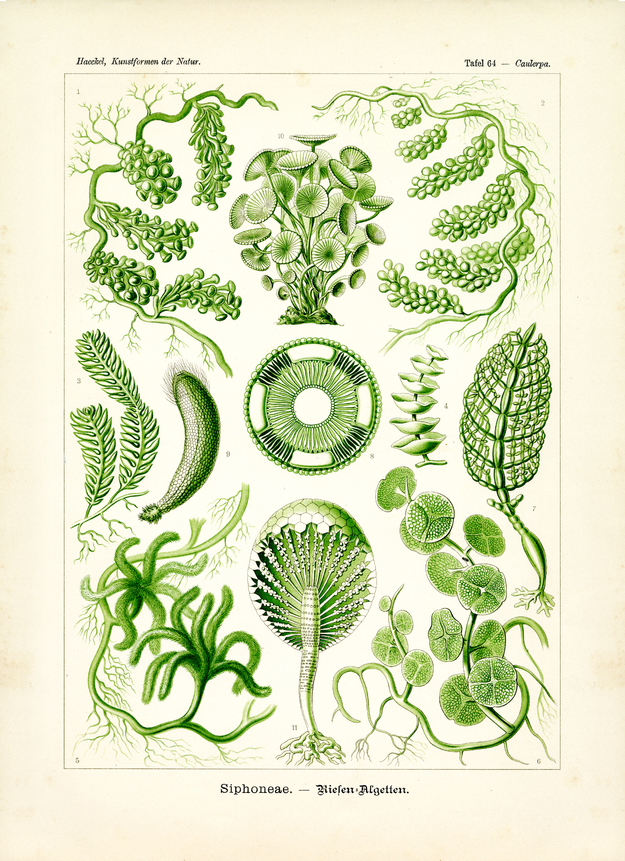Translation of the original German introduction by Ernst Haeckel:
Division of Protophyta (Urpflanzen); - main class of Zoosporatae (Algetten); - class of Siphoneae (Riesen-Algetten).
In several respects the class of Siphonea or “Giant-Algetta” seems one of the most peculiar divisions in the plant kingdom. Usually their relatives, “pipe-algae” or “tube-algae”, are placed within the main class of algae or seaweed. However, true algae (plate 15 and 65) are always multi-cellular forming multiple tissues that are composed of various cell forms, just like all “tissue-plants” or Metaphyta. Siphoneae, however, are unicellular, just like all “original plants” or Protophyta (plates 4, 14, 24, 34). The most peculiar feature of these “Giant-Algetta” is the fact that the unicellular organism reaches a tremendous size, multiply branched out and building, due to division of tasks of the branches, formations that resemble at times the multi-cellular Thallus of lower Metaphyta (algae, fungi), at times the body of higher plants with stem, root and leaves. The “giant cell” or “Thalloid” of Siphoneae is usually several centimeters in length, at times over a meter, forming a brachiate tube with the lower root lines anchoring in the ocean floor resembling real plant roots; the ‘cell stem’, similar to a real stalk, grows unlimited and carries numerous ‘parting branches’ on its upper half that take the shape of leaves and fruits. The thin but firm wall of the green tube envelops a single hollow space filled with watery cell sap and plasma; inside the plasma wall layer numerous small nuclei and green Chlorophyll grains are resting.
The family of Caulerpacea (fig. 1-6) is represented only in the unique kind of Caulerpa that is peculiar due to the extraordinary variability of its numerous species and the total lack of reproductive organs; it proliferates by budding and detachment of individual scions or branches. Most other Siphoneae, however, reproduce with the help of spores or “gametes” that are produced in special gamete containers (Sporangiae). The latter rest, often most regularly, in the radially organized ‘parting branches’ that emanate from the central stem of the unicellular tube, so in Dasycladea (fig. 8-11).
Translation by VR Translators Bangalore
We've scanned the original lithography at 1200dpi on the Epson A3 scanner of A3 scanner huren. You can download a 400dpi JPEG here.
